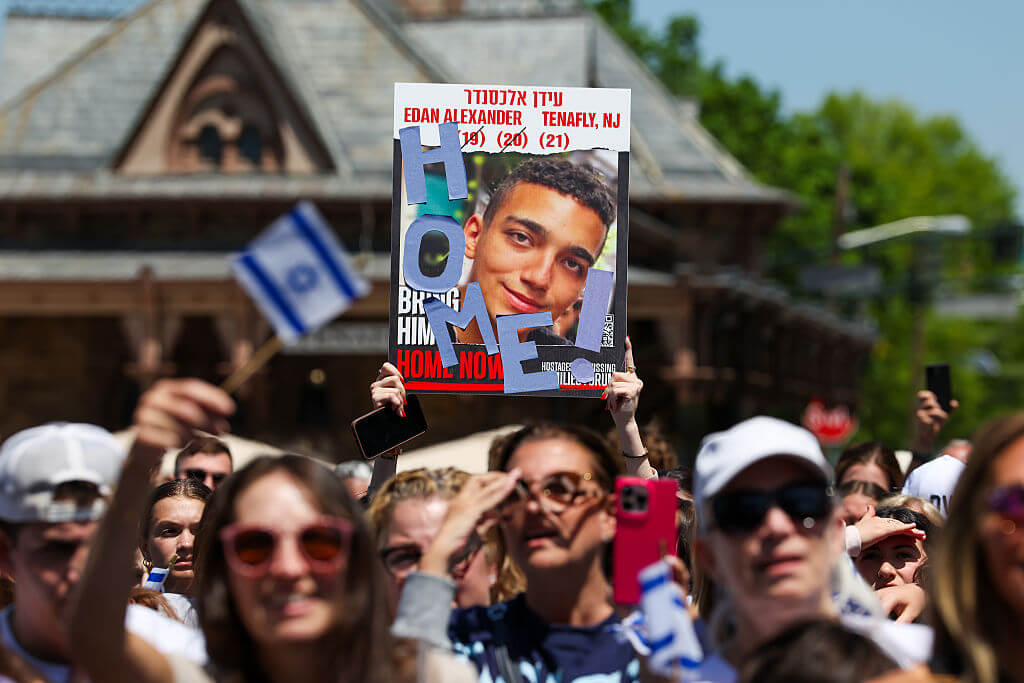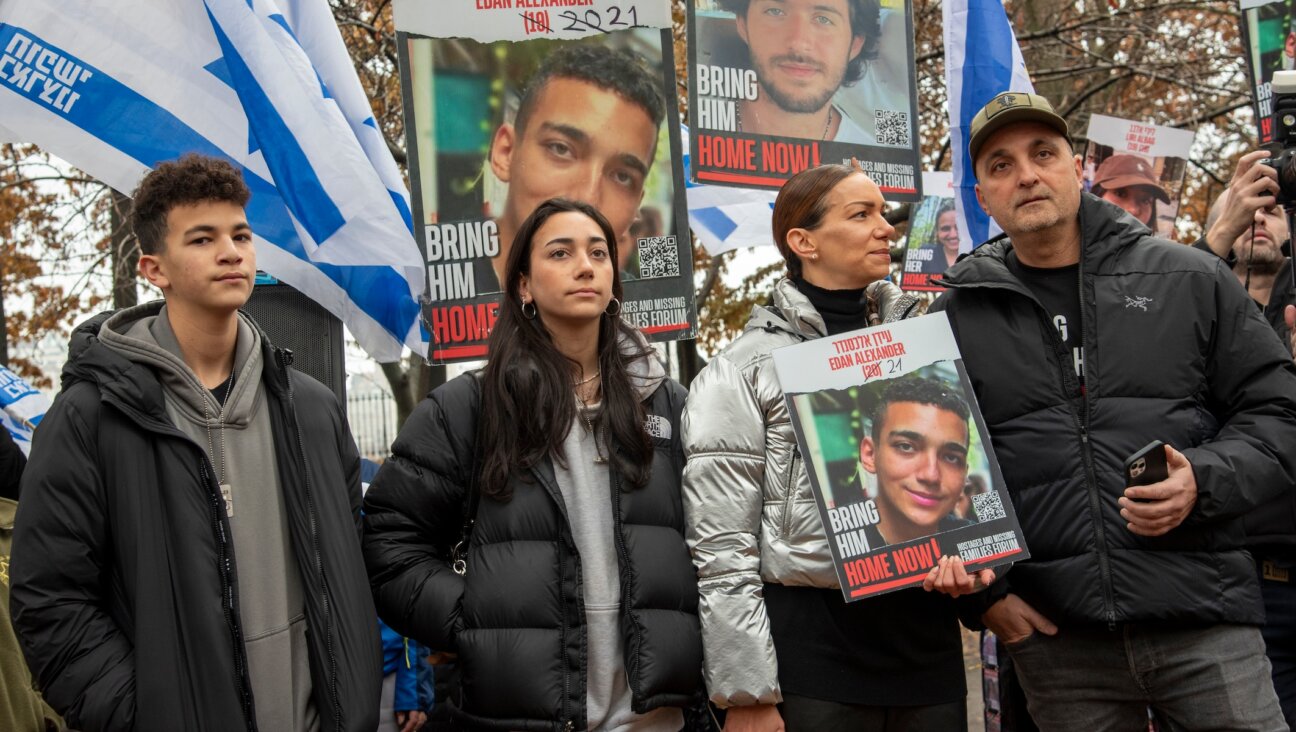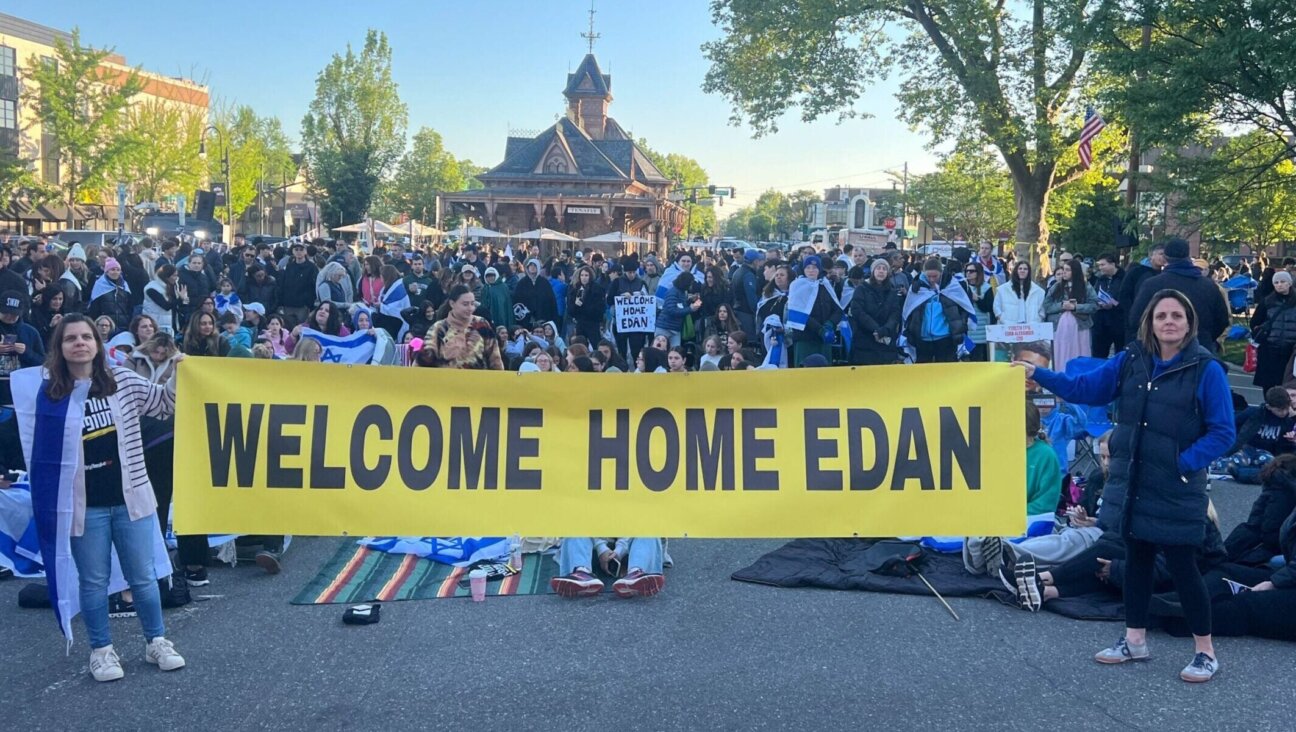Details Emerge About Nazi Murders of Soviet Jews
In August 1941, German sailor Reinhard Wiener saw something he was unlikely to forget. Stationed in Latvia, Wiener was walking with a fellow serviceman toward the beach, when a soldier came running toward them. “He said we shouldn’t go on because a horrible thing was happening on the beach,” Wiener recalled. “We asked what was going on, and he said yes, they’re shooting Jews down there.”
Wiener recounted the story in an interview in 1981, published on a new Yad Vashem Holocaust museum Web site documenting the annihilation of the Jews in the Nazi-occupied areas of the Soviet Union. Trained as a cameraman, Wiener carried a Kodak 8mm camera that day.
“I decided to go on anyway, so I could document it,” he said. Wiener reached a line of soldiers standing along a trench. A truck full of people soon arrived. “The guards shouted something I didn’t understand and the people in the truck started jumping out. I saw they were wearing yellow badges.”
The Jews were ordered to run to the trench and stop. “They were told to stand with their backs to the firing squad. I think at that point they understood what awaited them, because just below they could see a layer of bodies covered with sand. The firing squad was then immediately ordered to step forward and shoot.”
Wiener’s two-minute film is the only filmed evidence of one of the worst stages in the annihilation of European Jews, the murders in the Soviet Union.
Despite decades of research, this chapter of the Holocaust remains one of the least documented. The last three years have seen a vast project by Yad Vashem to shed some light on the era. The project, “Story Untold,” was sponsored by the president of the Russian Jewish Congress, Moshe Kantor. It examines 101 killing sites in 51 areas in Lithuania, Latvia, Belarus, Russia and Ukraine, some of them previously undocumented. Jews were shot dead by Germans and local collaborators.
“The Eastern area is one of the largest gaps in our knowledge,” says Prof. David Bankier of the Hebrew University, who heads the International Institute for Holocaust Research at Yad Vashem.
“The project’s uniqueness is that it deals with the smaller killing sites, not the large ones like Babi Yar, of which so much has already been written. We are dealing with sites about which there is very little information. Not many eyewitnesses remain, and we even lack basic information like numbers and the conduct of Jews and the local population.”
The liberation of the region by the Soviets spurred inquiries examining the events. “As soon as an area was liberated, the NKVD [secret police] would come and investigate — what happened, who cooperated. It’s fascinating material,” Bankier said. The reports, uncovered after the fall of the Soviet Union, formed an important part of the research.
The researchers compared the NKVD reports to those made by the Germans, and mapped the sites through the GPS satellite navigation system.
Yad Vashem also looked into the composition of the killing units, organized by the Germans but including many local residents. “Our estimate is 10 locals to every German,” said Bankier.
“Sometimes we could recreate the social and political profile of the members of the killing squads. The general impression is that we’re not talking about criminals, but literally about the Jews’ neighbors — the grocer, the barber, sometimes friends of the victims. They killed voluntarily.”
“But perhaps we can also answer some questions about the Jews. How were they tricked to go to the pits? What was explained to them when they were told to take their clothes off? Did they know by this stage what would happen, or were they told they’d be getting work clothes before being sent to the east? I hope the new research will answer all those questions.”
The Forward is free to read, but it isn’t free to produce

I hope you appreciated this article. Before you go, I’d like to ask you to please support the Forward.
Now more than ever, American Jews need independent news they can trust, with reporting driven by truth, not ideology. We serve you, not any ideological agenda.
At a time when other newsrooms are closing or cutting back, the Forward has removed its paywall and invested additional resources to report on the ground from Israel and around the U.S. on the impact of the war, rising antisemitism and polarized discourse.
This is a great time to support independent Jewish journalism you rely on. Make a gift today!
— Rachel Fishman Feddersen, Publisher and CEO
Support our mission to tell the Jewish story fully and fairly.
Most Popular
- 1

Fast Forward Ye debuts ‘Heil Hitler’ music video that includes a sample of a Hitler speech
- 2

Opinion It looks like Israel totally underestimated Trump
- 3

Culture Is Pope Leo Jewish? Ask his distant cousins — like me
- 4

Fast Forward Student suspended for ‘F— the Jews’ video defends himself on antisemitic podcast
In Case You Missed It
-

News In Edan Alexander’s hometown in New Jersey, months of fear and anguish give way to joy and relief
-

Fast Forward What’s next for suspended student who posted ‘F— the Jews’ video? An alt-right media tour
-

Opinion Despite Netanyahu, Edan Alexander is finally free
-

Opinion A judge just released another pro-Palestinian activist. Here’s why that’s good for the Jews
-
Shop the Forward Store
100% of profits support our journalism
Republish This Story
Please read before republishing
We’re happy to make this story available to republish for free, unless it originated with JTA, Haaretz or another publication (as indicated on the article) and as long as you follow our guidelines.
You must comply with the following:
- Credit the Forward
- Retain our pixel
- Preserve our canonical link in Google search
- Add a noindex tag in Google search
See our full guidelines for more information, and this guide for detail about canonical URLs.
To republish, copy the HTML by clicking on the yellow button to the right; it includes our tracking pixel, all paragraph styles and hyperlinks, the author byline and credit to the Forward. It does not include images; to avoid copyright violations, you must add them manually, following our guidelines. Please email us at [email protected], subject line “republish,” with any questions or to let us know what stories you’re picking up.














